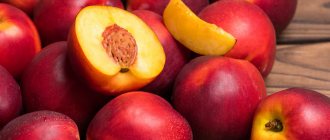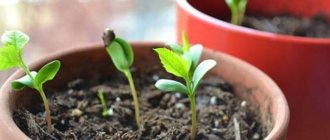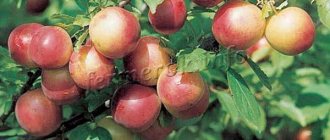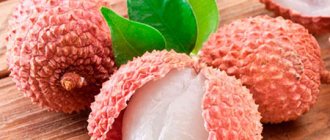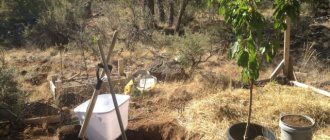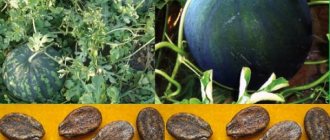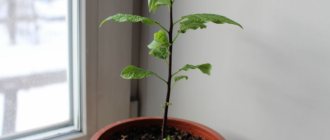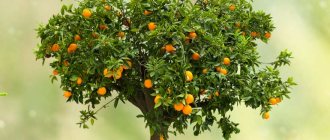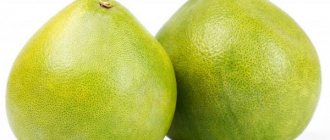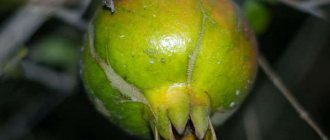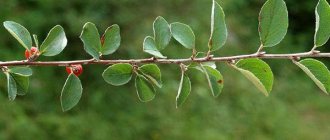Where to get seeds and how to prepare them
To obtain seeds suitable for planting, gardeners must purchase peaches. But residents of the southern regions simply need to go out into the garden and pick fruits from the garden plot.
Before you start planting seeds in the fall, it should be separated from the pulp, washed and dried. In this case, the bones must be intact and without signs of parasites inside. If they were stored all winter until spring, then you will need to do the following:
- soak for 8-10 hours in rain or melt water;
- Store the bone in damp sawdust or cloth at room temperature for 3-4 days.
Attention!
If you buy Turkish or Spanish products, then, of course, they are tasty, but the seedlings will not take root in our conditions. Therefore, it is necessary to choose crops that are adapted to the required climate.
In addition, in order for the fruit to receive the characteristics of the mother tree, the seedling must be taken from it. You need to collect pits in the fall and only from ripe, untouched peaches.
Varieties of peaches suitable for such planting and their characteristics
To grow a peach from a pit in the country, you need to choose the right variety. This aspect will determine the development and growth of the tree, as well as the yield. So, for the local climate, zoned varieties must be selected for planting in open ground. This is due to the fact that they will not suffer from a lack of light, and will also take root in the temperature conditions of the region. Therefore, the crop can survive even a cold winter.
To correctly select varietal plants, the following should be considered:
- Self-pollinating – Many varieties of peach crops are self-pollinating. But to get a rich harvest, you can plant three or four more types of trees nearby that will bear fruit in the future.
- Winter hardiness is an important aspect, because when grown in open ground the tree will be able to survive the winter. In addition, it is unpretentious.
- Early ripeness - in order to be able to pick ripe peaches from trees in the summer, it is necessary to plant early ripe varieties on the site.
Choosing a peach variety
It is necessary to purchase a regional variety of peaches that will grow well under local climatic conditions.
When choosing a variety of peaches, pay attention to the following selection criteria:
- Cold resistance. Peaches should be able to withstand cold weather well to make them easier to care for.
- Self-pollination . If the fruit tree will grow, for example, on a balcony or in another enclosed space, then you need to choose a variety that can be artificially pollinated.
- Early maturation . If you want to grow a tree that will bear fruit in the summer, then it is advisable to choose early varieties of peach.
Important: the seeds must be free of cracks, mold, pulp and rot.
Soil preparation
To grow plants, you can use any soil mixture: store-bought or homemade. In the second case, you need to mix the soil with humus, as well as perlite, coconut fiber or sand in a ratio of 1:1:1/2.
Attention!
Soil from a store or garden may contain pathogens and parasite larvae, so it must be disinfected before use.
To disinfect the soil, it should be calcined in the oven, on the stove or in the microwave. This should be done a week before sowing the seeds.
Planting bones at home
Experienced gardeners often tell you how to grow a peach correctly. For planting you will need a pot or cup with a capacity of 200-300 ml with a hole for drainage.
You need to fill the selected container with soil, water it with melted water, rain water, or at least standing water. Spread the material on a container and press it to a depth of 1 cm. If planted deeper, shoots may not appear.
In order for seedlings to grow correctly, it is necessary to place them correctly in the soil. Otherwise, the direction of the shoots may be downward, so all efforts were in vain. Therefore, it is very important to seat the bone evenly.
At the last stage, you need to cover the crops with film and put them in a warm place - the room temperature should be about 25℃. In this case, it is necessary to constantly open the shoots for ventilation and watering.
Planting a kernel from a seed
This method cannot be called easy, because to get the core, you need to break the bone. And this is not easy, because the peach is thick. For a safe procedure, you cannot do without a vice. The bone must be clamped between the moving elements and begin squeezing until it splits.
The kernel can be immediately planted in a container or pre-germinated in a damp cloth. In any case, the seedlings will hatch in two weeks.
Step by step instructions:
- soak the kernels in warm water. The fluid should be changed constantly. After 3-4 days they will absorb moisture and increase;
- place the material in various containers with a drain hole;
- then wrap each container in cling film. However, it should be opened frequently to allow air flow. Do not overuse watering.
As soon as the shoots appear, remove the film.
Cold method
When choosing this method of obtaining a peach tree from a pit, you will need a room with low temperature, as well as humidity and air access. The ideal option is the cellar or lower shelves of the refrigerator.
The cold method includes:
- filling small containers with wet sand or peat;
- immerse the bones in them to a depth of 7-8 cm.
- Wrap everything in a plastic bag with holes and put it in a cool place for 90 days.
At the same time, it is important to check the contents daily and sprinkle sand if necessary. But it is important not to overdo it, otherwise the sprouts will rot before they have time to sprout.
After 3 months, sprouts will appear, which should be carefully transplanted into a container with drainage holes. As a soil mixture, it is necessary to use a mixture of peat, humus and leaf soil. Place the container with the sprouts in a well-lit place. In this case, it is better to maintain the temperature at 10 ° C for 5 days.
Warm method
It includes preliminary preparation of the bone. First of all, it must undergo rapid delamination. To do this, you need to put the material on the top shelf of the refrigerator for 1-1.5 weeks. After this procedure, it is advisable to scarify it.
Then the bone should be immersed in any growth stimulator for several hours. As soon as the preparation comes to an end, lower the peach pit into a nutritious light mixture by 5-8 cm. You will also need to create a greenhouse effect: cover with film or glass.
Seedlings should be germinated in a warm place with good lighting.
Attention!
The first shoots should not be expected early - they will appear in about 120 days.
As soon as they hatch, you need to get rid of the material that creates the greenhouse effect.
Methods for germinating seeds
A tree can be grown from a seed in several ways. And the gardener can choose the one he likes. To obtain a positive result, you need to prepare the material. The seed must be carefully removed from the peach, being careful not to damage the shell. Then the bone should be washed with cold water.
Cleaned and washed raw materials should be dried at room temperature away from heat sources and sunlight. If it is not possible to plant the seed immediately, you should store it in a cool, dark place.
It is important to remember: about 40% of the seeds germinate, 20% of the seedlings die when transplanted to a permanent place in the garden, so you should stock up on a significant amount of planting material.
Stratification
The essence of the method is that stressful conditions are artificially created for the seed, which accelerate germination and at the same time harden the plant.
See also
How to cure peach curl, methods of control and prevention of the diseaseRead
How to proceed:
- prepare a substrate for stratification: neutral peat, sawdust, small wood shavings, coconut shavings;
- pour the substrate into a bag or pot, make holes for gas exchange;
- place the seed inside a bag or pot, sprinkle the substrate on top;
- slightly moisten;
- place in the refrigerator in the fruit department or cellar (temperature for stratification should be within 5-6 degrees Celsius);
- regularly moisten the substrate.
After 3-4 months the seed will sprout. It's time to transplant it into a pot for growing a seedling.
Seed extraction
This method of growing seedlings speeds up seed germination. But at the same time, the likelihood of death of the embryo increases due to a violation of the protective shell (shell).
The shell of the dry seed is carefully broken and the seeds are removed. In this case, the thin shell cannot be damaged. The seed is placed on a plate and filled with water (the liquid should only lightly cover the seeds). To speed up germination, you can add aloe juice, potassium humate or a root formation stimulator to the water.
After a visible increase in the material, the seed is taken out of the water, placed in the soil, moistened, and covered on top with a film with holes for air intake.
The container is placed in a warm place. The soil is regularly watered, and condensation is removed from the film. After the sprout appears, the plastic is removed and the sprout is placed in a bright place, but away from direct sunlight.
Warm way
The longest and least effective method. But it is suitable for growing seedlings at home. How to organize the process:
- dry seeds need to be stratified: placed in the fruit compartment of the refrigerator and kept there for 5-6 days;
- soak the seeds in a growth stimulator (aloe juice, potassium humate, Kornevin) for 3-4 hours;
- plant in the ground, deepening it to 6-8 cm;
- moisten and cover with film with holes for gas exchange;
- put in a warm place;
- Regularly moisten the soil and remove condensation from the film.
After the sprouts appear, the containers should be placed in the light, but away from direct sunlight. The temperature should be 16-18 degrees Celsius.
Caring for peach before planting in open ground
A peach can grow and develop further at home - this does not require special efforts. The main thing is to ensure proper care of the crop. So, the pot should be in a room that is well lit and ventilated, and the air temperature is 18-25 degrees Celsius. If there is not enough natural light, then you will have to light phytolamps.
During the period from autumn to winter, the crop is dormant. At this time, it should be moved to a cooler place where the temperature is not higher than 4℃ with a plus sign. At the same time, sudden changes in temperature must be avoided. After the kidneys wake up, the temperature should be raised to 10℃. This approach guarantees better budding.
Water the tree frequently and abundantly. The only exceptions are periods of dormancy and fruiting. At this time, watering should be moderate, as the top layer dries out. In order for the peach to have a compact crown, every year you need to get rid of weakened or improperly growing branches. If the shoots grow strongly, then their tops should be pinched.
As the roots grow, you will need to transplant the plant into another container of larger capacity. For the soil mixture, mix turf, leaf soil, humus, sand and peat in a ratio of 2:1:1:1:1. The procedure should be carried out in early March before flowering or in the first ten days of September.
From March to August, it is important to fertilize the peach crop, which grows at home, with mineral and organic fertilizers. But the use of fresh manure is unacceptable, as it can burn the root system. Adherents of organics use a nutritious infusion of humus.
Planting seeds
There are two ways to sow peach seeds:
- In open ground at the dacha.
- In a pot at home.
Let's look at each method in more detail.
Sowing in open ground
If sowing was carried out at the end of June–beginning of July, the sprouts will appear at the end of summer. It is important that they have time to prepare for winter. A protective light brown bark must form on the shoots, otherwise young plants will not survive harsh winter conditions, regardless of the type of shelter. To prepare seedlings for cold weather, their growth is limited: the tops are pinched, watering and feeding are stopped.
If sowing was carried out in August-September, then the seedlings will sprout next year. This later sowing date is preferable, as the seeds will undergo natural stratification in the ground. The percentage of viable seeds in this case will be lower.
For sowing, choose a warm, sunny place with fertile, well-drained soil. Compost and complete mineral fertilizer are applied to the garden bed at the rate of 1/3 cup of fertilizer mixture per 1 square meter. The earth is dug up onto the bayonet of a shovel, mixing all the ingredients well. The seeds are planted at a distance of at least 15 cm from each other in one or two rows to a depth of 6-7 cm, and a school of peach seedlings is created.
Sowing in a pot at home
This method of growing peach seedlings is the most preferable because it allows you to create optimal conditions for the growth and development of a young tree. Planting in open ground is carried out in the spring of next year. Then in the third year the peach will bear fruit. To plant seeds, you should take pots with a volume of 1.5-2 liters. There must be one or more drainage holes at the bottom to drain excess water that flows down during irrigation.
Drainage material is placed at the bottom - expanded clay, vermiculite or small pebbles. Then the entire volume is filled with a soil mixture, including sand, garden soil and peat in equal parts. 3 seeds are planted in a 2 liter pot at an equal distance from each other to a depth of 6-7 cm.
Important! The depth of peach pit placement must be at least 6 cm!
The soil is well moistened, the pot is covered with film or glass to minimize drying out of the soil and put in a warm place. Illumination in the period before germination does not matter. Germination of peach seeds lasts on average 3-4 weeks. At this time, the container must be periodically ventilated and the soil slightly moistened as needed.
Planting a tree in open ground
The place for “moving” the peach should be prepared in the fall. or in the spring, when the soil warms up. The site should be sunny, without drafts, and not flooded with rain and melt water. It also helps that in winter it still has good snow cover.
On the future bed you need to sprinkle fertilizer at the rate of a bucket of humus and 1 tbsp. ash per 1 m2.
Attention!
If there is no ash, it can be replaced with superphosphate (20 g/m2) and potassium sulfate (15 g/m2).
Algorithm for transplanting seedlings:
- Prepare holes the size of which should correspond to the container with the peach.
- Place the plants according to the following pattern: 15-20 cm in a row and 30 cm between rows.
- Planting - remove the tree with a lump of earth and move it into a hole. Cover with soil.
- Water. If after the procedure the soil has subsided a little, then add more soil.
- Tamp down a little and mulch.
Next, you will need to monitor the soil moisture and cleanliness of the bed. Therefore, it is necessary to constantly get rid of weeds. In winter, you can make a shelter using brushwood, spruce branches, etc. Fallen leaves and sawdust are suitable for insulating roots.
The first fruits on a peach tree grown from a seed will appear in 3-4 years.
Caring for peach seedlings
After planting peach seedlings, they need special care. Therefore, during the first 2-3 years the tree should be carefully inspected.
Plants need regular watering. It is necessary to avoid a lack of moisture, as well as its excess. In addition, it is important to combat parasites and diseases. Pruning and timely fertilizing of the crop are important.
Before the onset of winter, the circle of the trunk should be well mulched with spruce branches or leaves. The tree also needs shelter. Burlap is suitable for this purpose.
Top dressing
Fertilizers can be applied every 14 days starting in March. They can be mineral or organic. With the onset of autumn, fertilizing is no longer needed. Mature trees feed on minerals three times a season, and young trees twice.
For the first time, fertilizers of mineral origin are applied during the budding period. To do this, use urea, nitroammofoska or Kemira at the rate of 30-40 g per young plant and 150-200 g per fruiting plant.
The peach should be fed a second time in mid-July. A mixture of superphosphate (50/200 g) and potassium salt (25/100 g) is suitable for this purpose for young and adult seedlings, respectively. The third feeding is necessary for fruit-bearing crops during the period of fruit formation.
Every three to four years you will need to add organic components. The norm is 1-2 buckets of compost or humus per tree.
Attention!
A year after applying organic fertilizers, the first application of mineral components should be skipped.
If you follow the timing and recommendations, the fruits will be ripe and tasty.
Trimming
The side branches of the peach bear fruit, so it should not be allowed to grow. The main pruning is best done a year after planting, in the spring. Strongly growing branches should be pruned and pinched.
Sanitary circumcision is performed when necessary. This is mostly done in the spring. Includes getting rid of dry, damaged and frozen branches. A year after planting in the ground on the central stem, it is necessary to shorten the shoots growing on the sides to 50 cm.
3-6 skeletal branches are left above the stem, and the rest are disposed of along with the trunk. A year later, shoots of the second tier are already formed on these branches, which should also be shortened to 0.5 m. In the same season, fruit-bearing shoots should be formed that can produce a future harvest. The peach must be maintained in this condition constantly.
Caring for peach seedlings before planting in a permanent place
To obtain strong seedlings, sprouted seeds require proper care. It will ensure success when planting trees in a permanent place in the garden.
Daylight hours
For normal development, peach trees require intense lighting for 16-18 hours. It is recommended to use an agricultural lamp: it gives a spectrum that best matches sunlight.
Irrigation and feeding of seedlings
The soil in the pots should be moistened, but not overwatered. Peach seedlings have an easily vulnerable root system. The plant is forced to exist in a limited capacity. For normal development, he requires adequate nutrition. It is recommended to feed the seedling once every two weeks. In this case, you should alternate the application of nitrogen and potassium-phosphorus fertilizers.
See also
Description of the Kiev Early peach variety, planting rules and careRead
You can use ready-made complex fertilizers for young fruit plants. In this case, feeding should be done according to the manufacturer's instructions.
Optimal temperature
If a peach seedling lives in an apartment in winter, then it requires a temperature of 2-4 degrees. In spring the temperature rises to 18 degrees. With the onset of summer (if it is impossible to plant the plant in a permanent place in the garden), the peach needs a temperature of 25 degrees Celsius.
Disease and pest control
Peach, like any other plant in the garden, suffers from diseases and parasites. These are mainly fungi and small pests: aphids, scabies, fruit moths, etc.
To combat fungal spores, gardeners use preparations containing copper. They mainly use copper sulfate or Bordeaux mixture at a concentration of 3% until the buds swell.
To get rid of parasites, you need insecticides. But if you spend enough time on prevention, these problems can be avoided.
Treatment is carried out every 1-2 weeks - you can spray the peach before harvesting the fruit. It is better to do this 10 days before harvesting.
Advantages and disadvantages of growing peaches from pits
Before you start growing a peach from a pit, you need to learn the specifics of the procedure and caring for the tree. First of all, you need to familiarize yourself with the advantages and disadvantages of this procedure.
The strengths of experienced farmers include:
- one seed produces the required number of seedlings;
- availability of the method;
- The crop grown in this way is a good material for grafting.
But there are also disadvantages to the method of obtaining homemade fruits. So:
- the hybrid will not retain the taste and quality of the original product;
- It may be difficult to find a suitable bone;
- a long and labor-intensive undertaking.
But, despite the possible difficulties, if you follow the planting rules, you will be able to reap a rich harvest of peaches.
Pros and cons of peach seed propagation
As you know, nothing is ideal, and the seed method, for all its advantages, has disadvantages, which include the fact that varietal qualities will most likely be lost. This is due to the fact that the seed ovary is formed as a result of cross-pollination and subsequently the fruits may not have the qualities of the mother tree. To accurately find out the “sex” of a plant, you need to wait until it bears fruit, which occurs in the fourth year of life.
If you follow the planting rules and proper care, the peach will produce an excellent harvest.
The advantage of seed propagation is that specimens that grew from seeds are much more resistant to adverse environmental influences, low temperatures and diseases.

